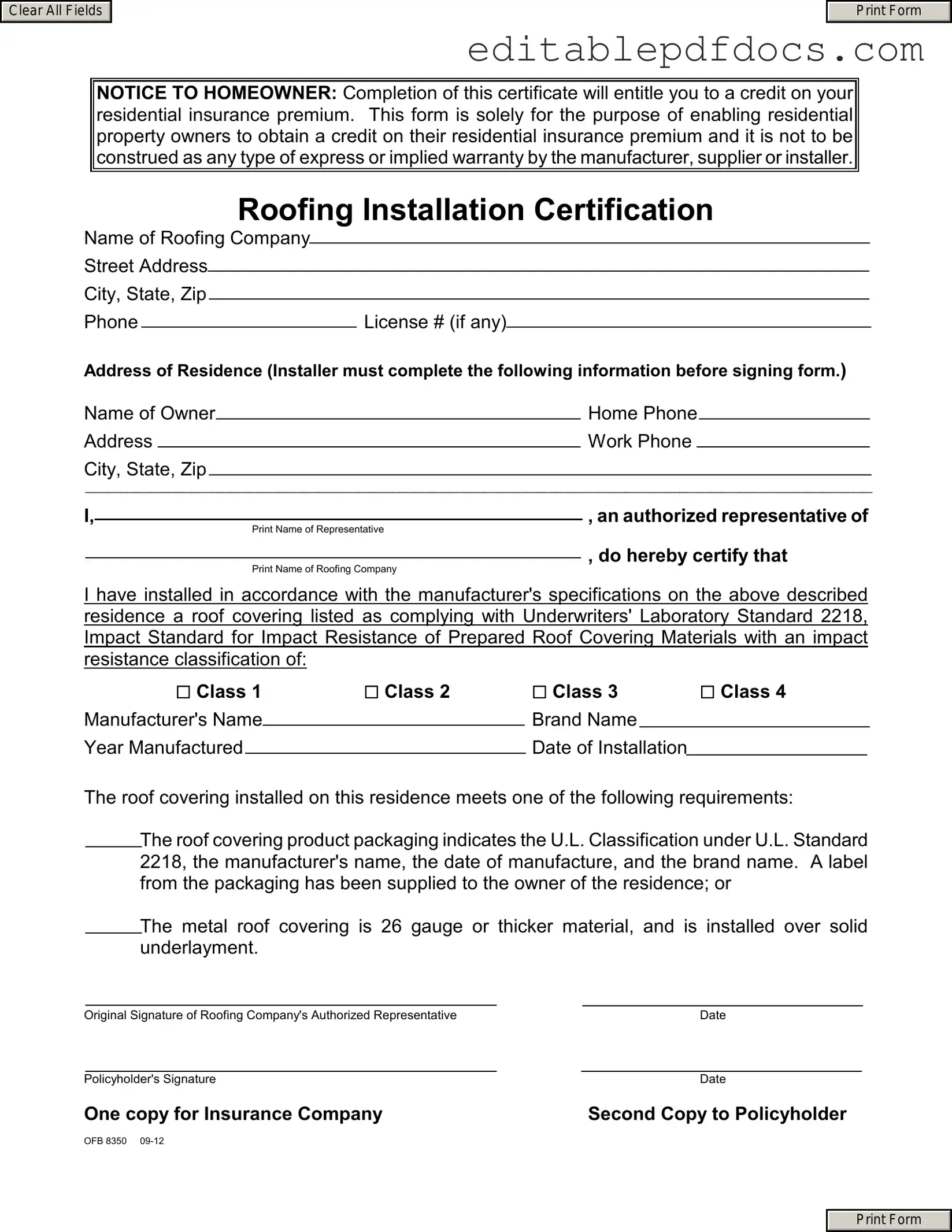Filling out the Roofing Certificate form accurately is essential for homeowners seeking a reduction in their residential insurance premiums. However, several common mistakes can hinder this process. Understanding these errors can help ensure a smooth submission.
One frequent mistake is failing to provide complete information about the roofing company. Homeowners often overlook the necessity of including the license number and complete address of the roofing company. This information is crucial, as it verifies the legitimacy of the contractor and ensures that the installation meets the required standards.
Another common error involves not accurately recording the date of installation. Homeowners may forget to include this detail or provide an incorrect date. This omission can lead to complications when the insurance company verifies the installation, potentially delaying the premium reduction.
Homeowners sometimes neglect to check the U.L. classification of the roofing materials. The form requires specific classifications under U.L. Standard 2218. If this information is missing or incorrect, it may invalidate the certification and the associated premium discount.
Additionally, many individuals fail to attach the necessary labeling from the roofing product packaging. This labeling is vital to confirm that the materials meet the required standards. Without it, the insurance company may reject the application for a premium reduction.
Another mistake is not ensuring that the roofing company’s authorized representative signs the form. An unsigned form lacks validity and can result in the denial of the premium reduction. Homeowners must ensure that the signature is present before submitting the certificate.
In some cases, individuals may not retain copies of the completed form. It is essential for homeowners to keep one copy for their records and send another to the insurance company. Without documentation, homeowners may face challenges if discrepancies arise later.
Finally, misrepresentations, whether intentional or accidental, can lead to serious consequences. Homeowners should be aware that any inaccuracies in the form may be considered fraud. This understanding underscores the importance of diligence and accuracy when completing the Roofing Certificate form.
